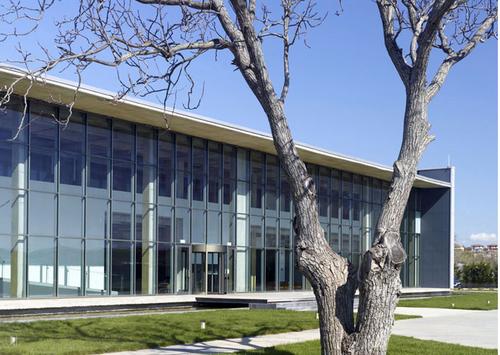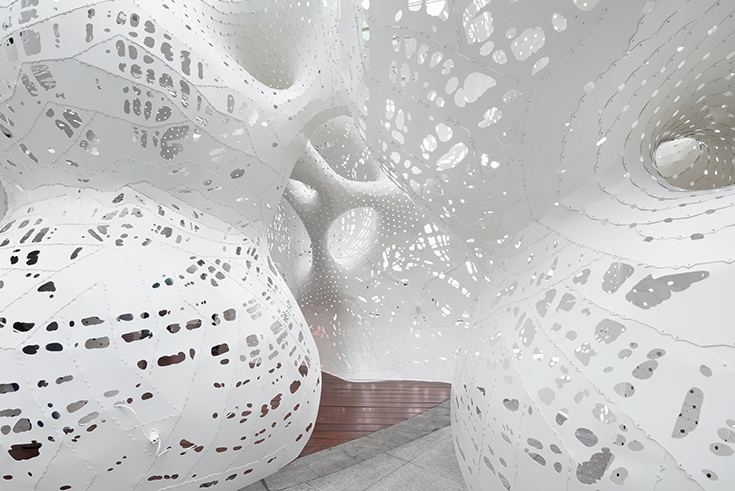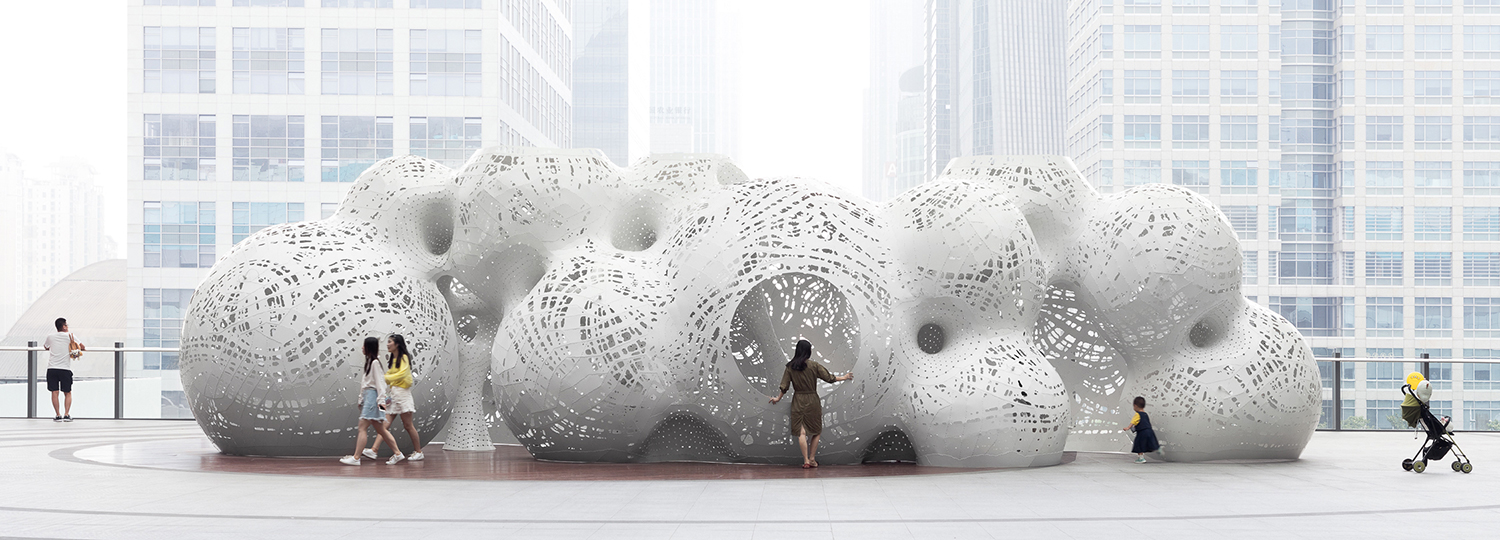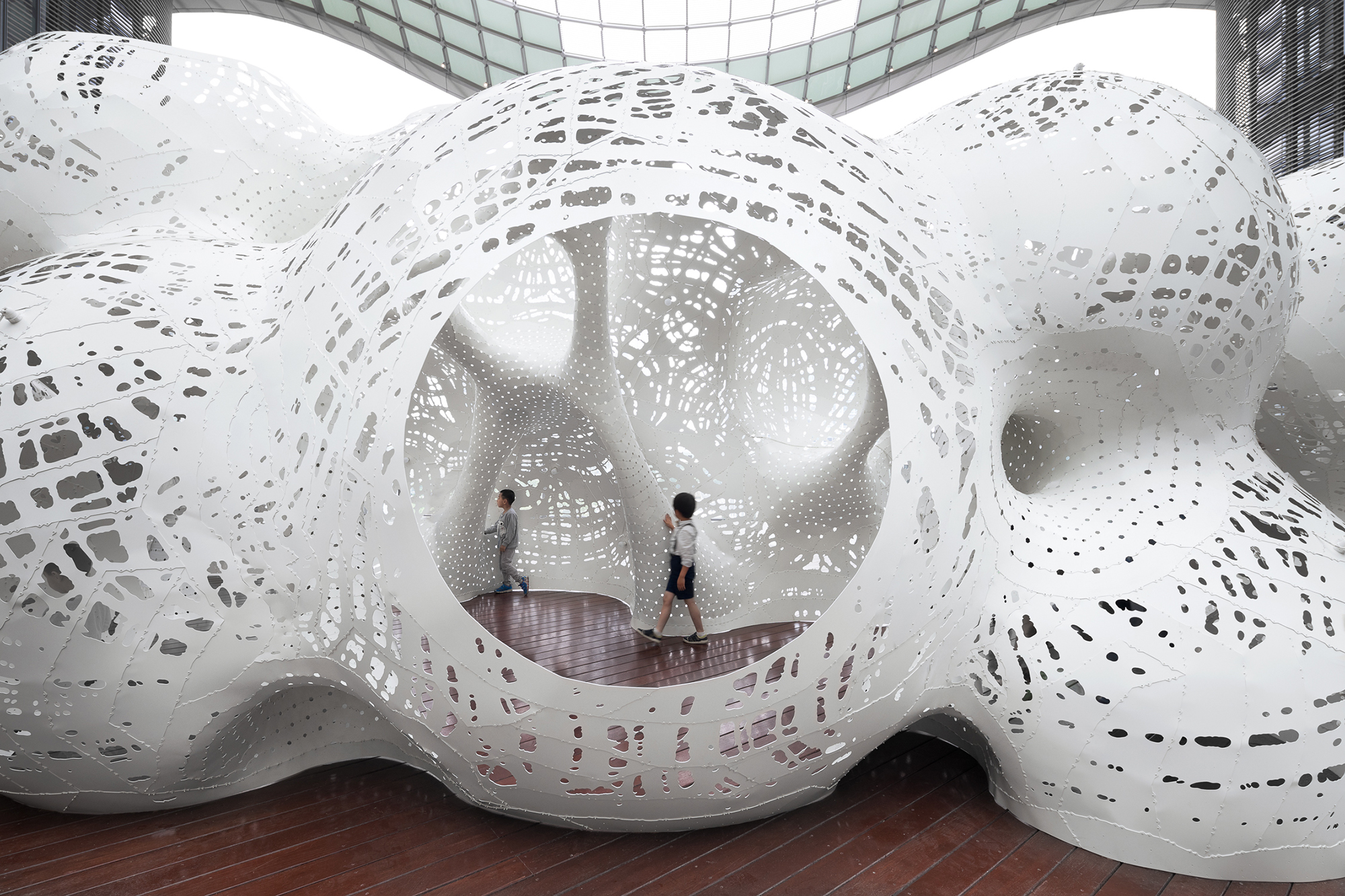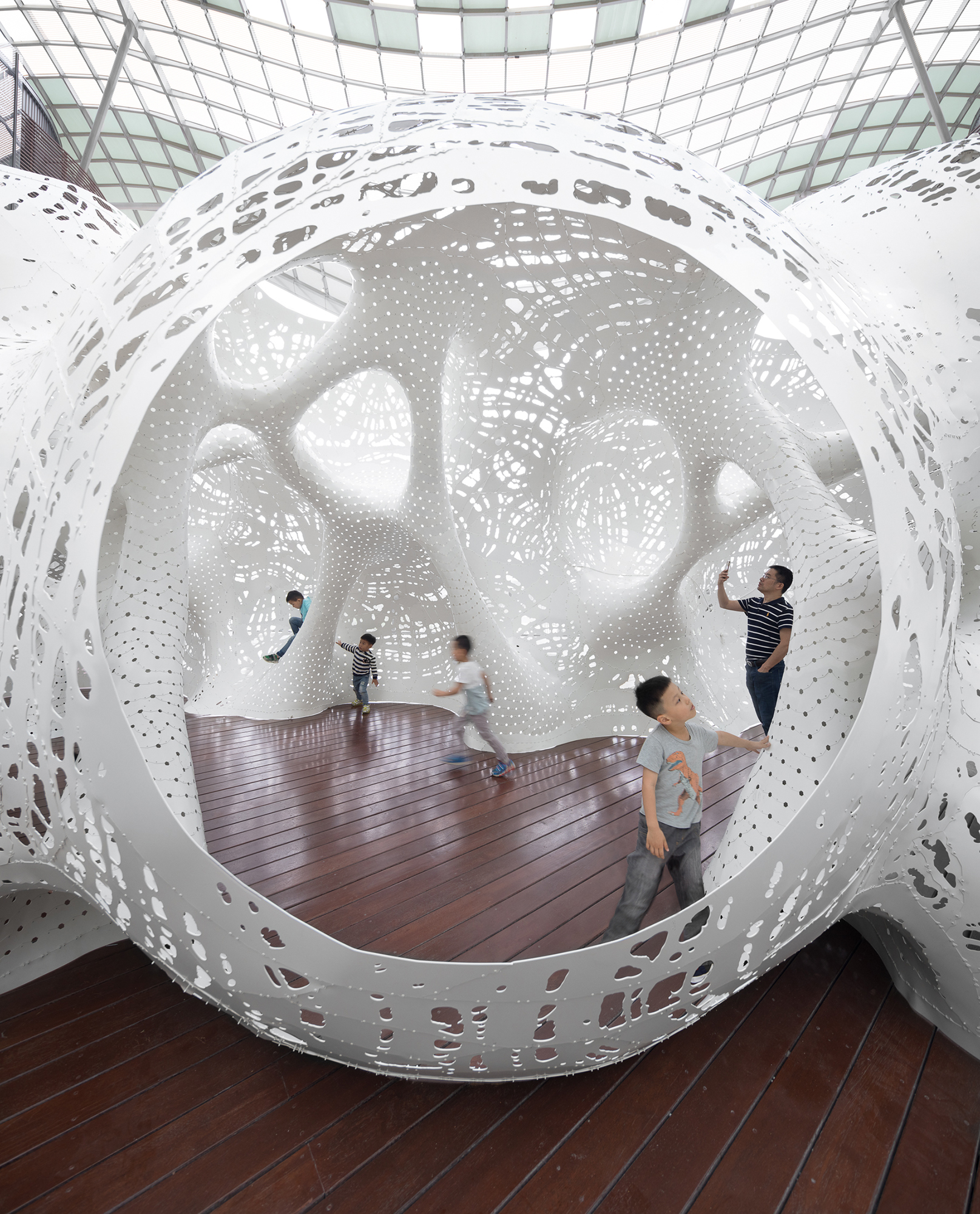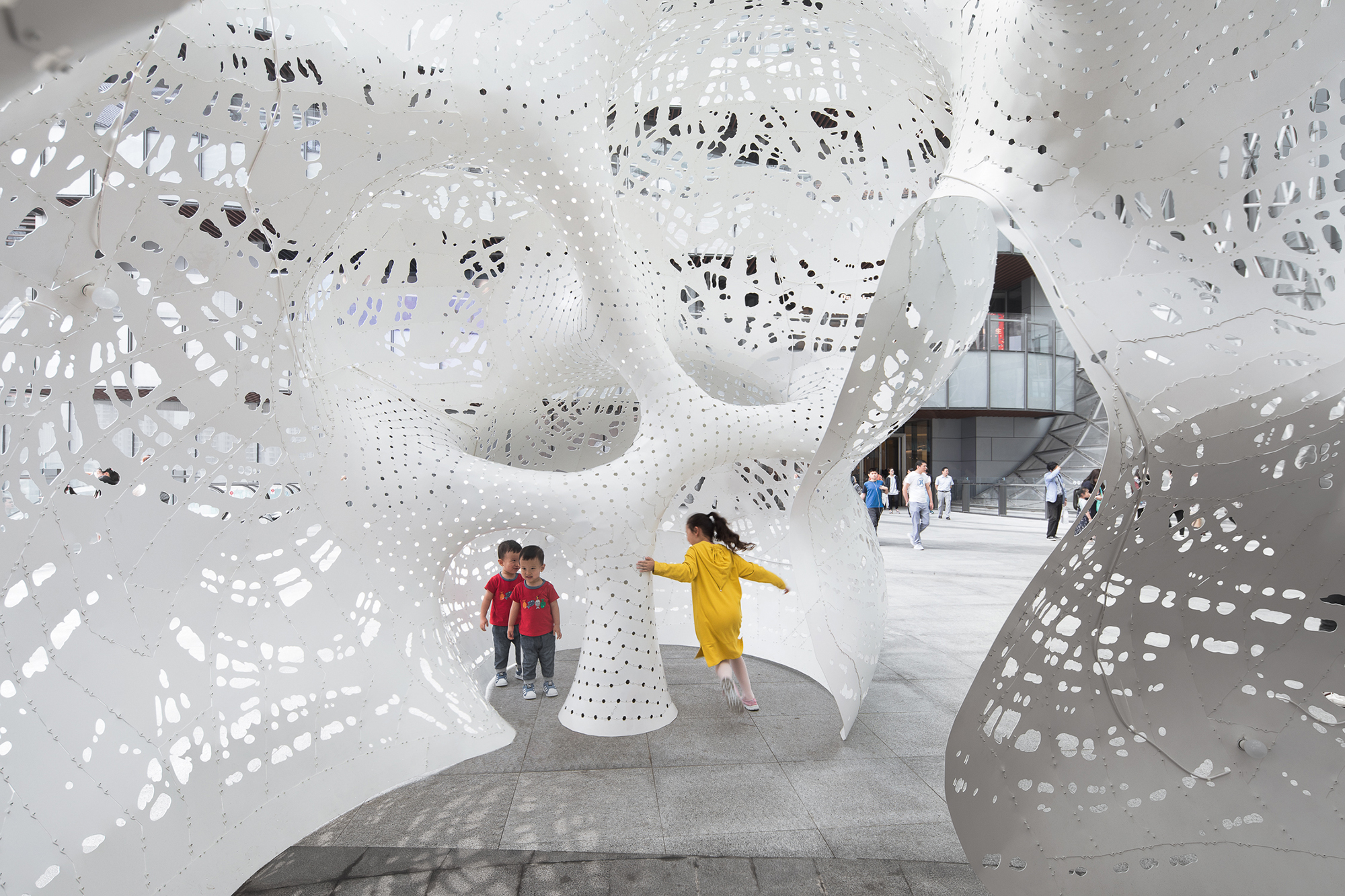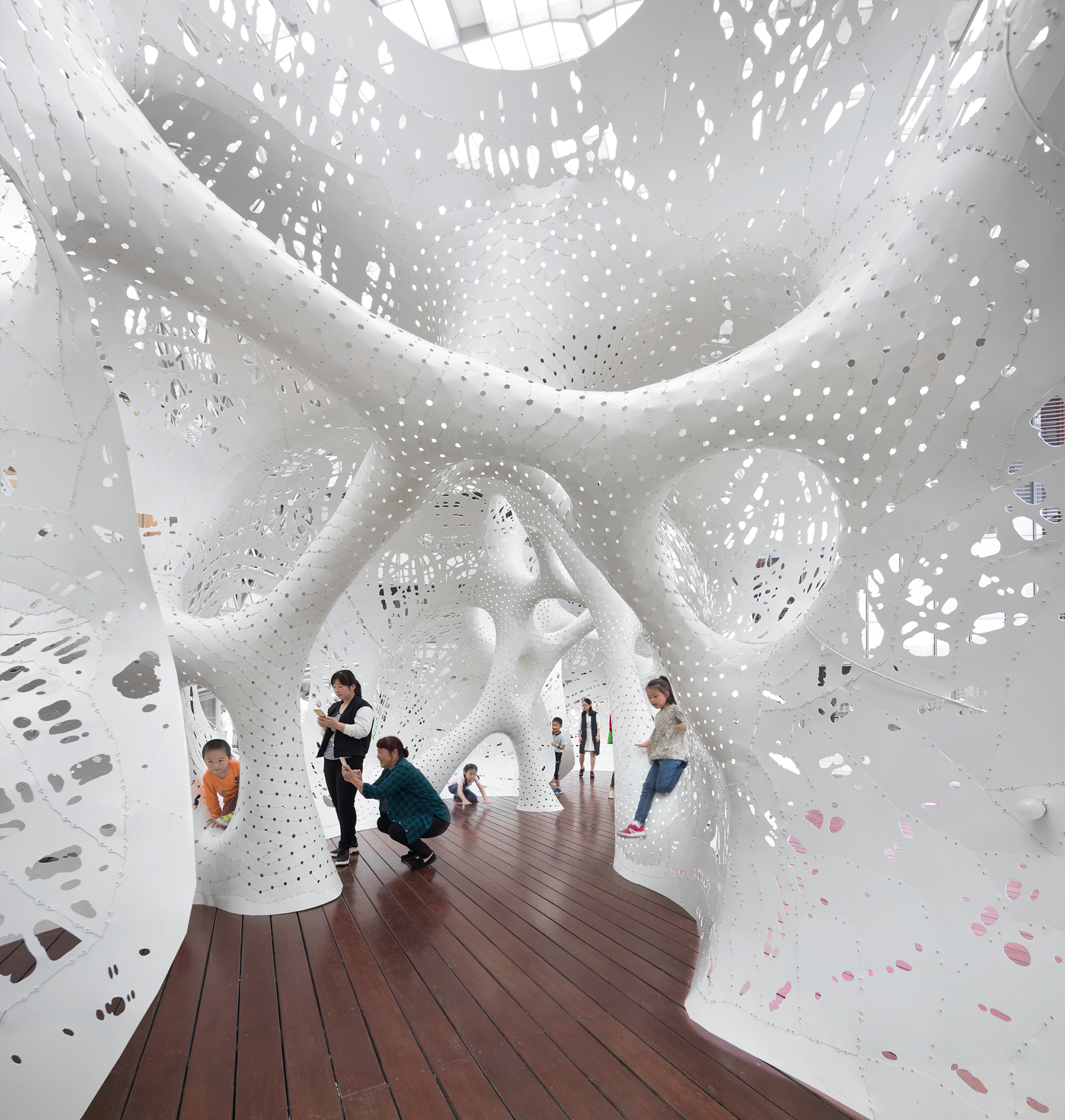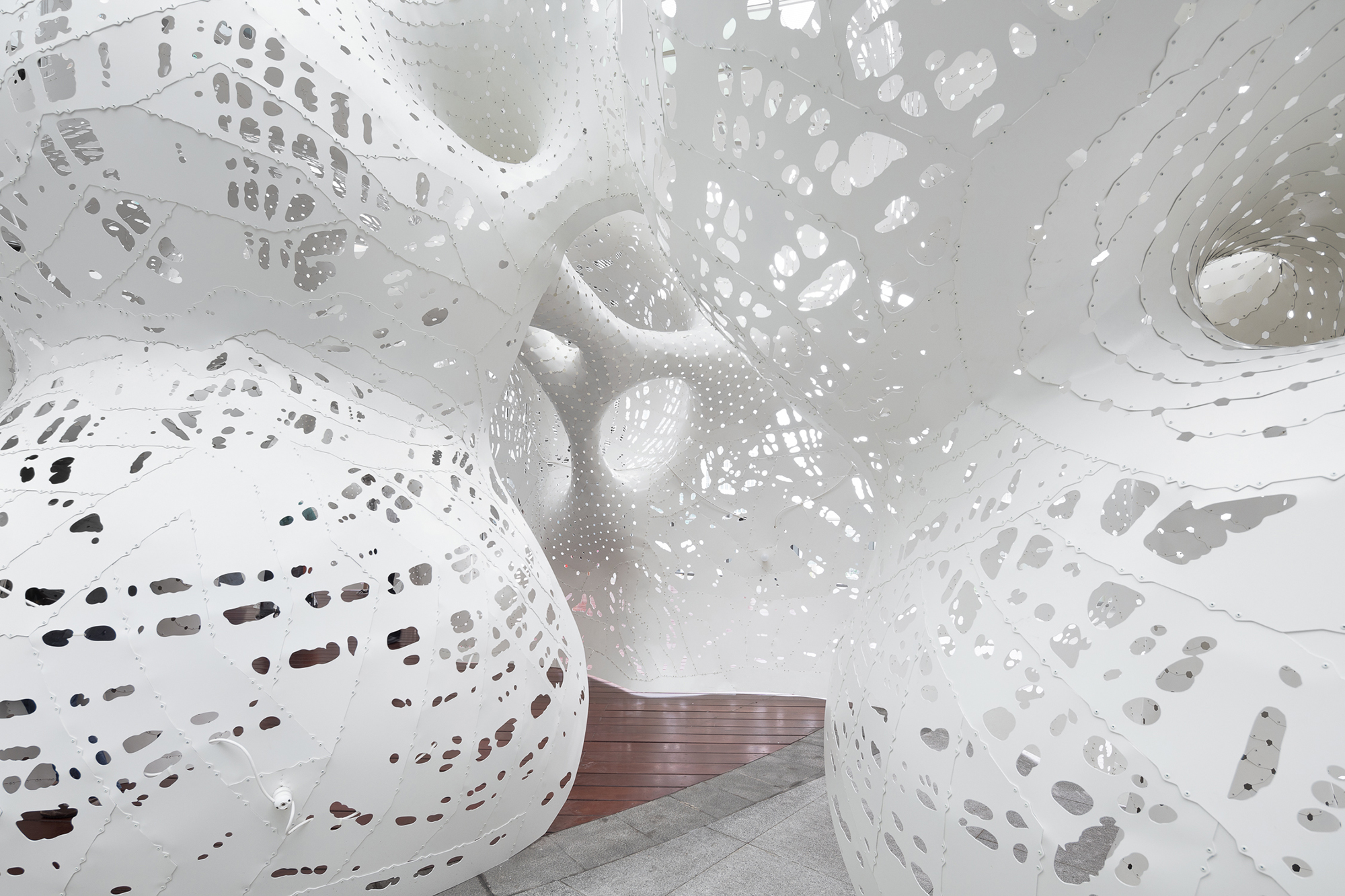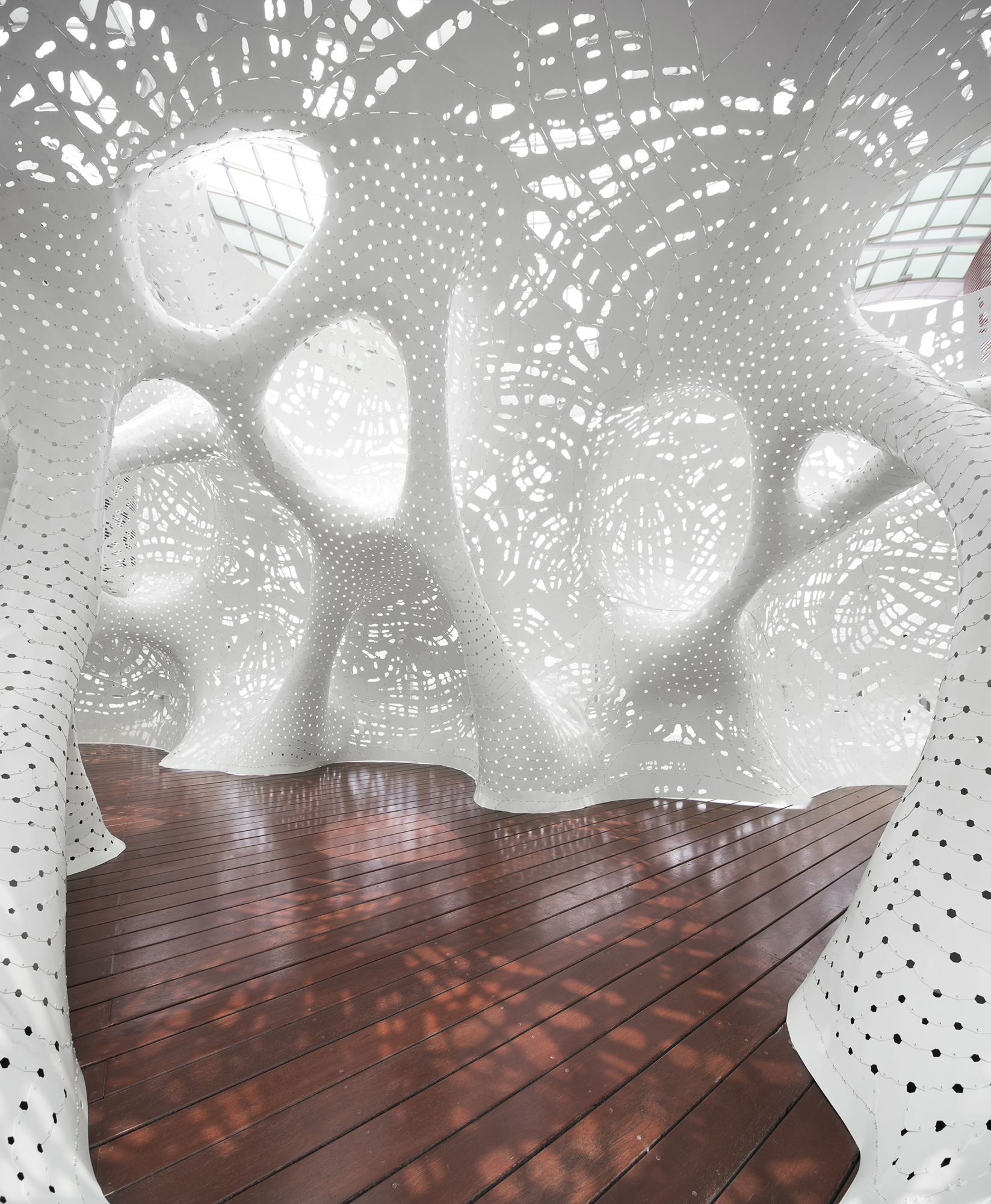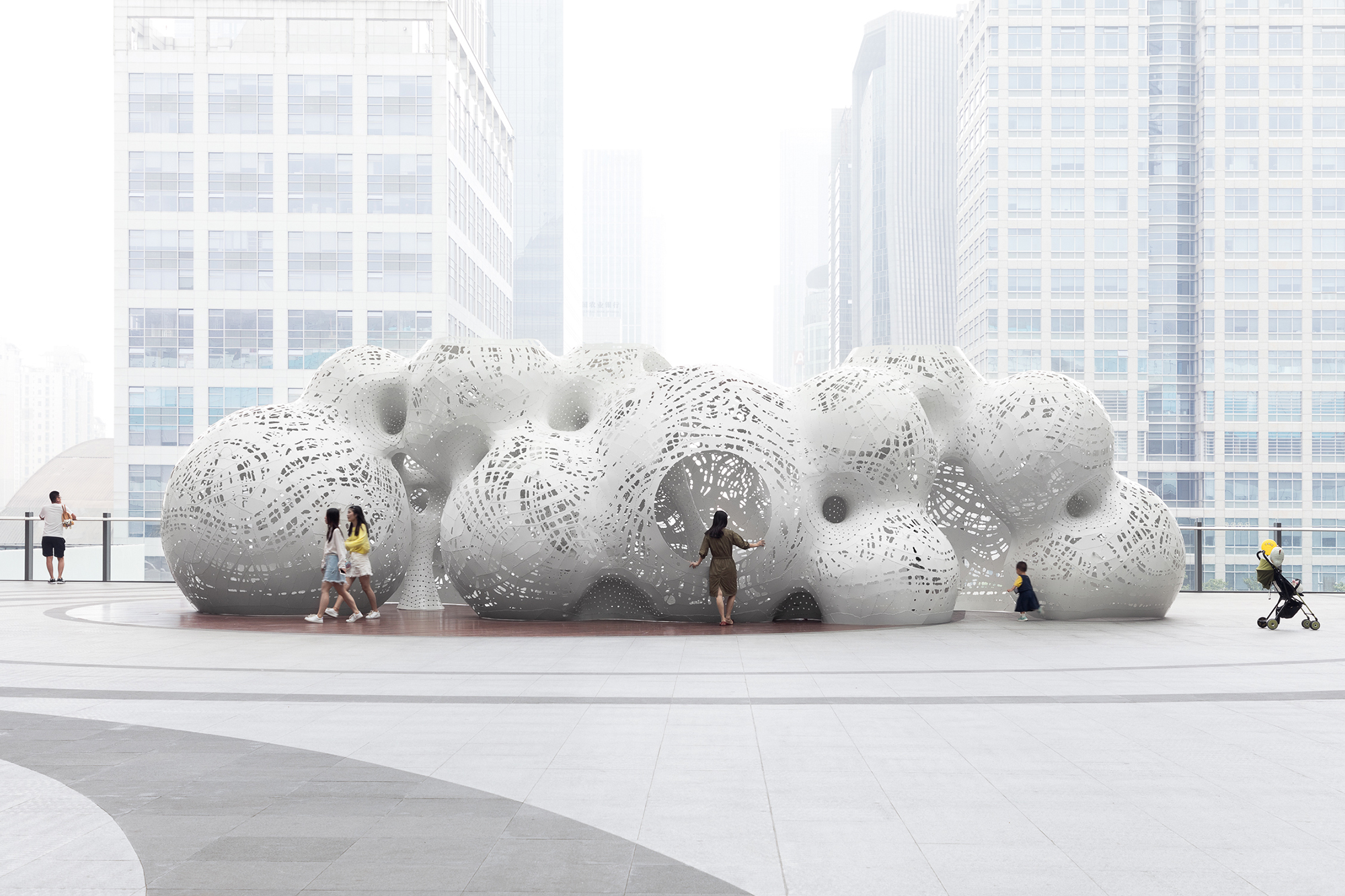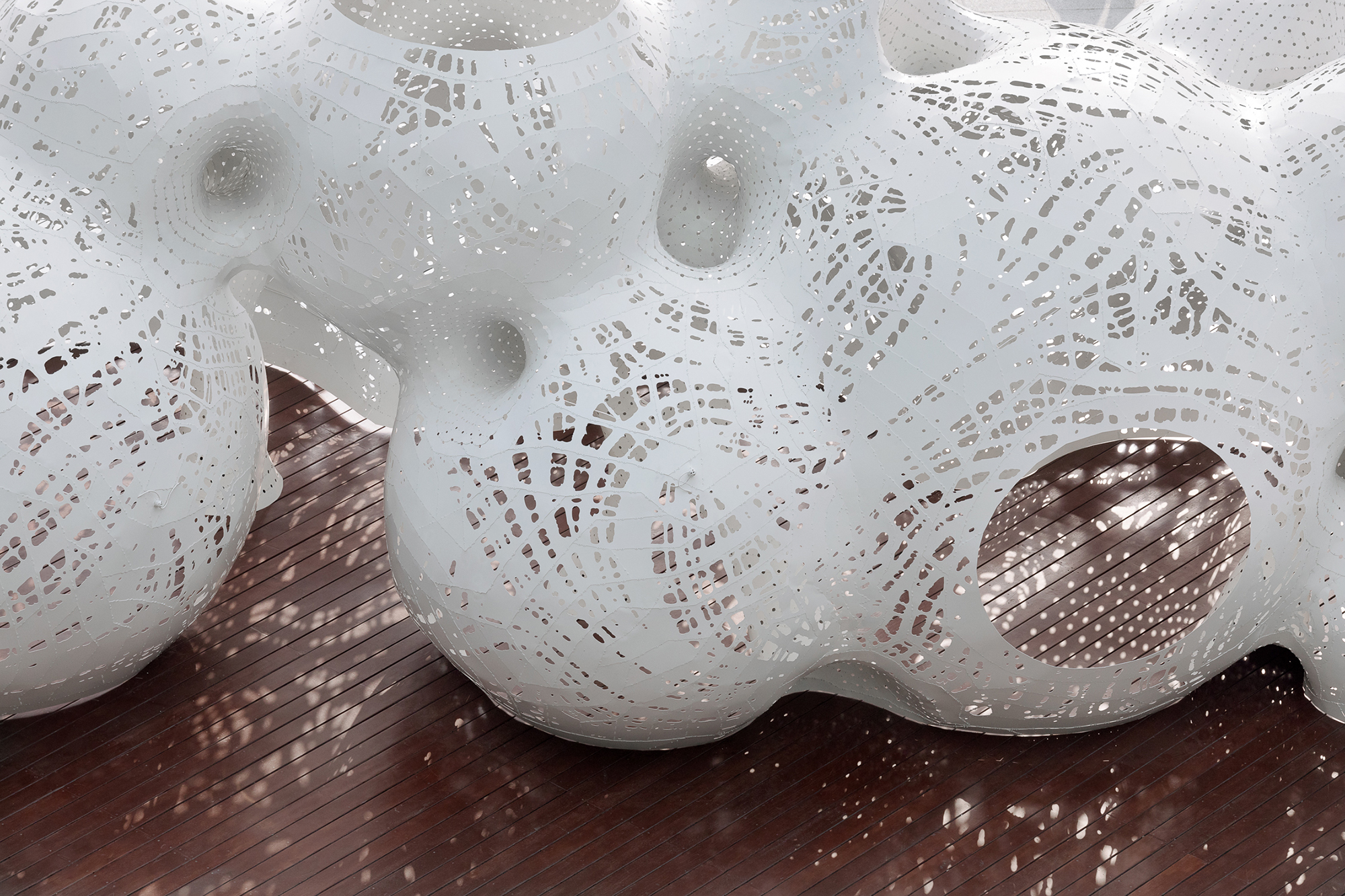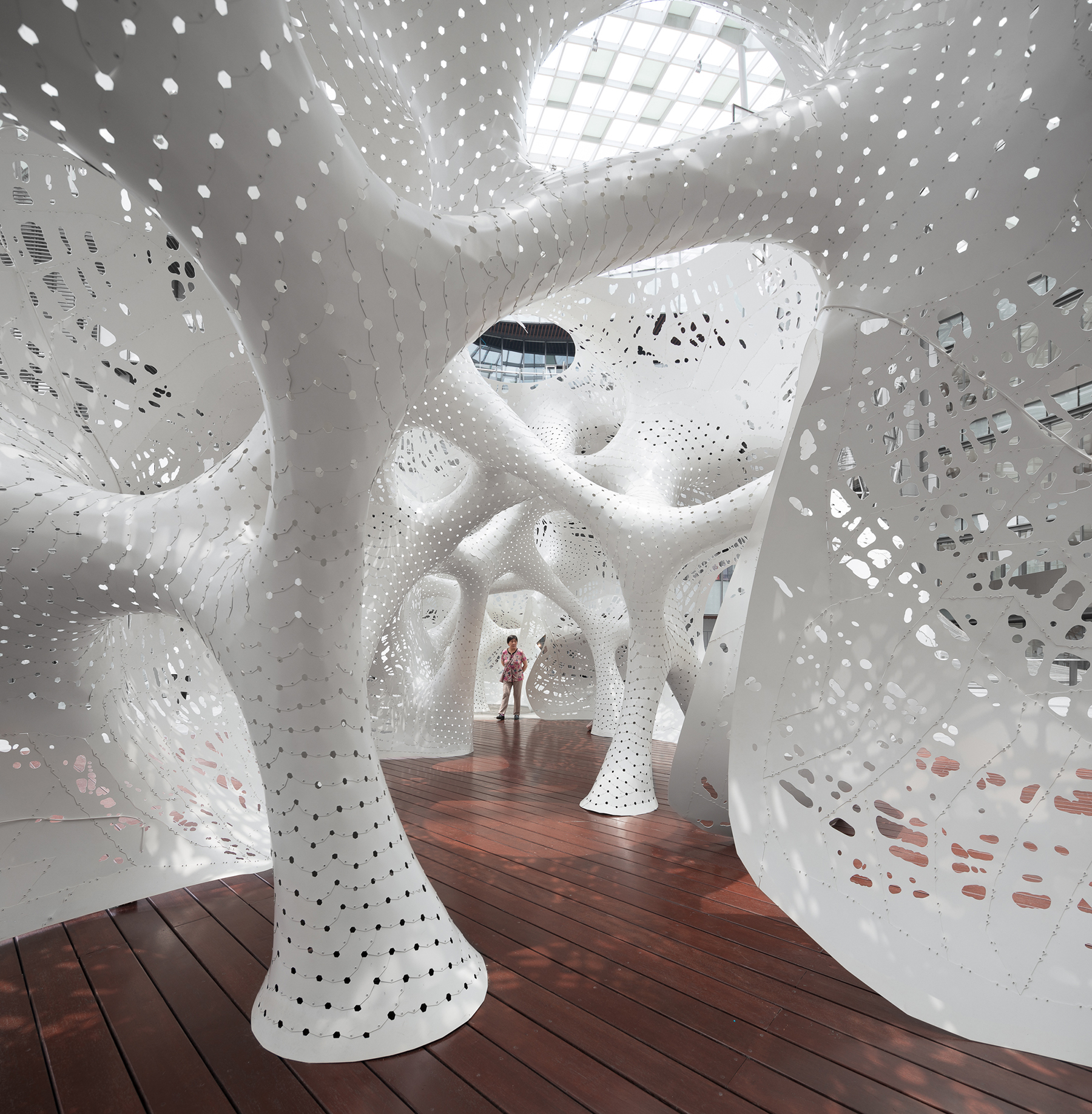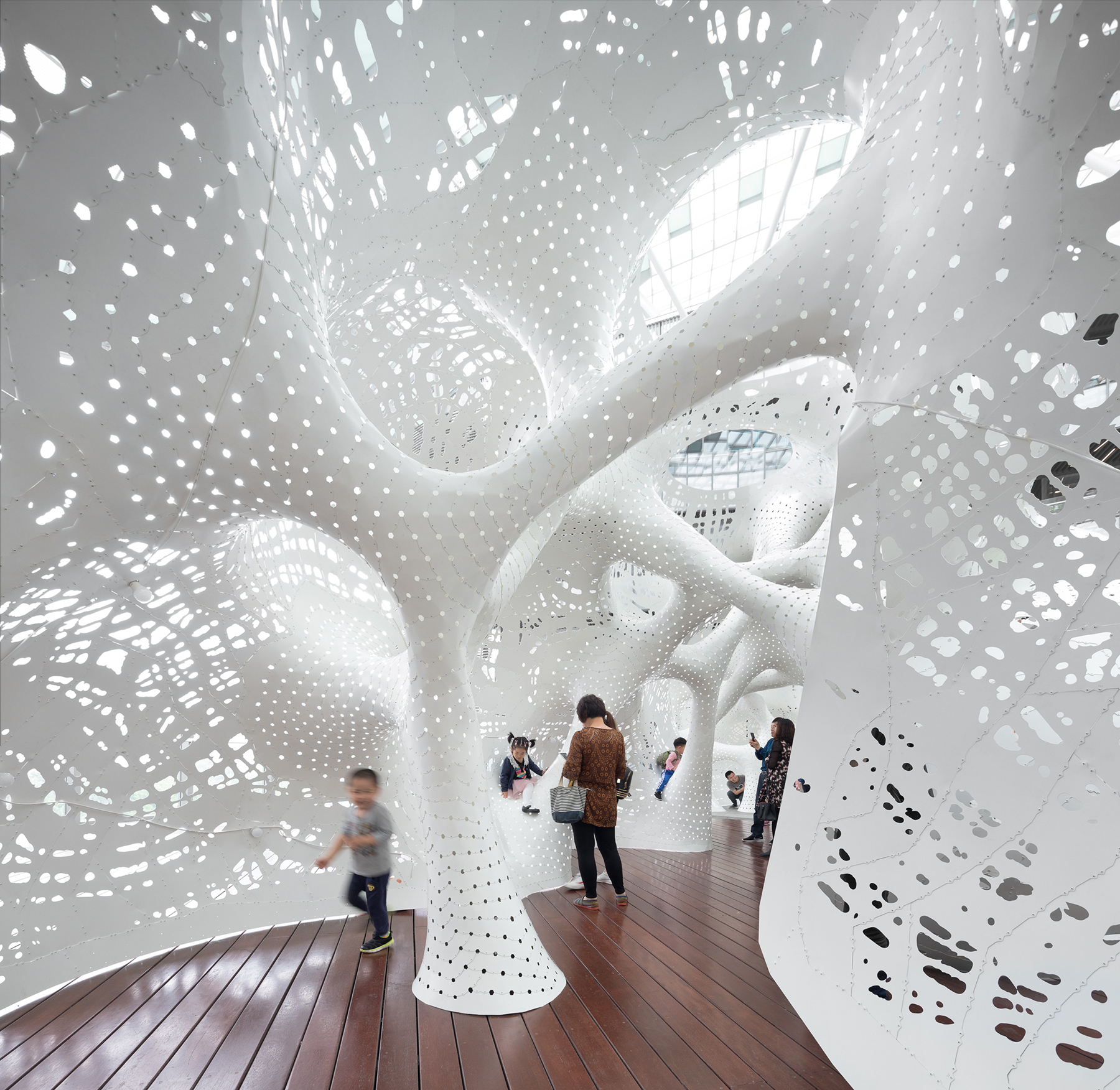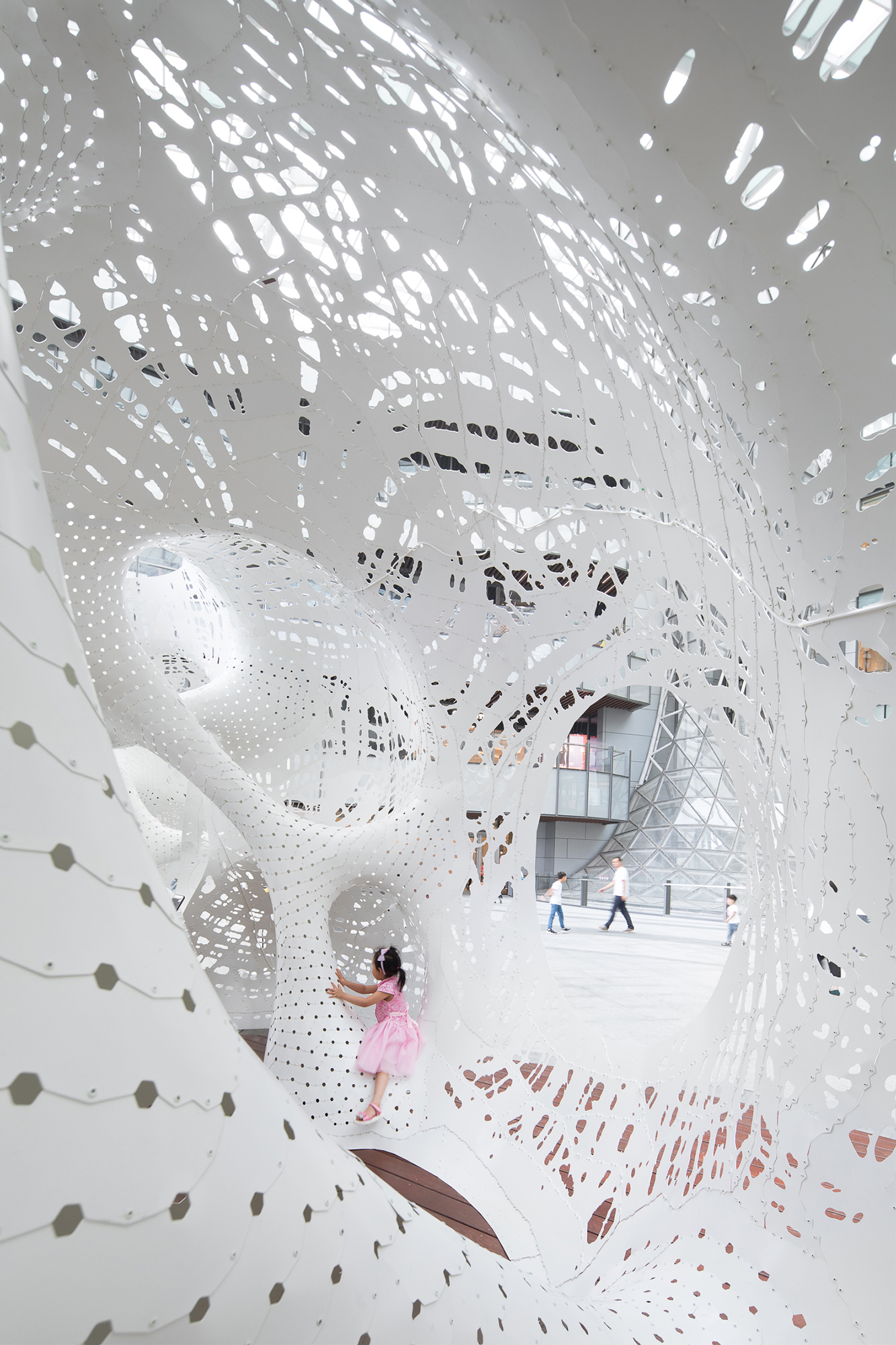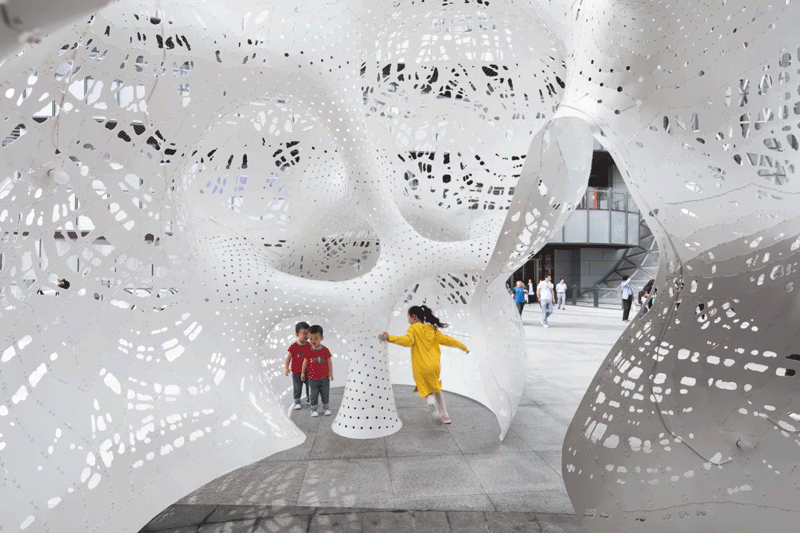Technology Enables Fantasy: Boolean Operator in Suzhou

Foto: NAARO
From outside, its body seems to be an assemblage of bubbles that stand in stark contrast to the straight lines of the buildings in the Chinese city of Suzhou. On the raised area in front of the Suzhou Centre, the outdoor pavilion interacts not only with pedestrians and visitors to the Centre, but also with passing auto traffic.
White, ultra-thin aluminum components just 1 – 2 mm thick become a seashell-like structure that forms vein-like paths here and there. The pavilion is like a sea creature in metallic form; it is also a powerful draw for viewers. Jules Verne, one of the inventors of science-fiction literature, is considered the inspiration for this project. Marc Fornes explains that for him, Verne’s stories opened doors to other universes. The pavilion embodies this idea. In the era of technology, Theverymany and Fornes are happy to be able to visualize Verne’s fantasies and let others experience them in a concrete way. They are striving for a different type of architecture, one that will arouse viewers’ curiosity and transport them to another world.
The unique interplay of light and shade creates a particular spatial effect that is emphasized by the surface texture of the pavilion. There is no clear separation between shell and supporting structure; in fact, the dense limbs, openings and parts meld into each other and come together as a whole that seems to be of a single skin. The fluid curves that twist away in two directions are the result of a 3D analysis. Before construction began, the structure was meticulously analysed to determine just how thick each part should be.
According to Fornes, visitors must cross the threshold and change their ways of looking at things in order to understand the project and immerse themselves in it – by climbing, touching and searching, using either eyes or hands. Children are the best explorers here, for they dive right into the journey to this new world. Adults often wonder how the sculpture of super-thin aluminum components can support itself.
White, ultra-thin aluminum components just 1 – 2 mm thick become a seashell-like structure that forms vein-like paths here and there. The pavilion is like a sea creature in metallic form; it is also a powerful draw for viewers. Jules Verne, one of the inventors of science-fiction literature, is considered the inspiration for this project. Marc Fornes explains that for him, Verne’s stories opened doors to other universes. The pavilion embodies this idea. In the era of technology, Theverymany and Fornes are happy to be able to visualize Verne’s fantasies and let others experience them in a concrete way. They are striving for a different type of architecture, one that will arouse viewers’ curiosity and transport them to another world.
The unique interplay of light and shade creates a particular spatial effect that is emphasized by the surface texture of the pavilion. There is no clear separation between shell and supporting structure; in fact, the dense limbs, openings and parts meld into each other and come together as a whole that seems to be of a single skin. The fluid curves that twist away in two directions are the result of a 3D analysis. Before construction began, the structure was meticulously analysed to determine just how thick each part should be.
According to Fornes, visitors must cross the threshold and change their ways of looking at things in order to understand the project and immerse themselves in it – by climbing, touching and searching, using either eyes or hands. Children are the best explorers here, for they dive right into the journey to this new world. Adults often wonder how the sculpture of super-thin aluminum components can support itself.
